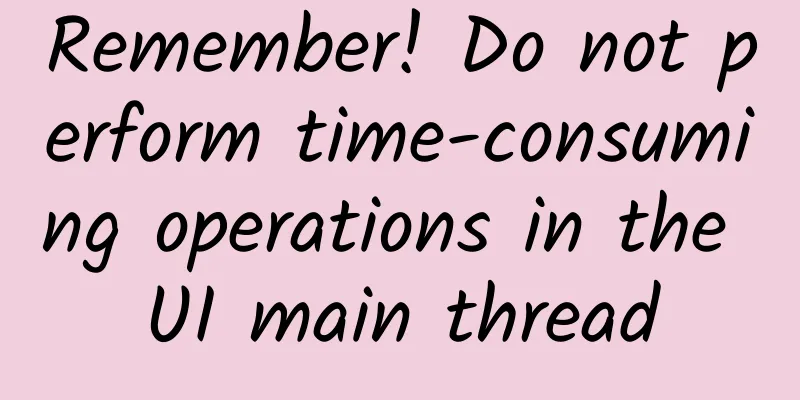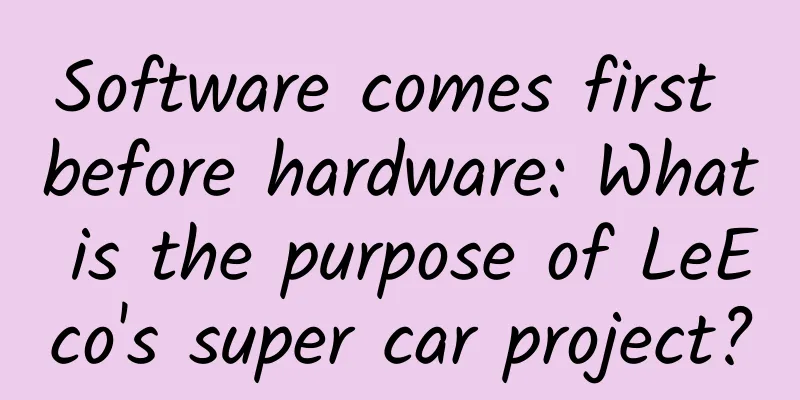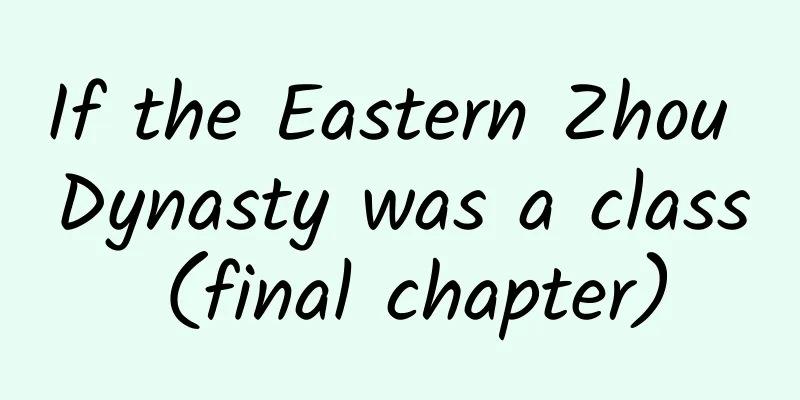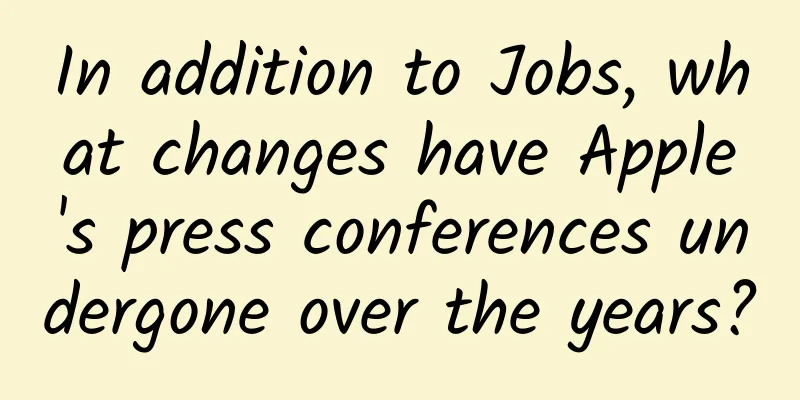Is it true that Android sub-thread UI operations are not allowed?
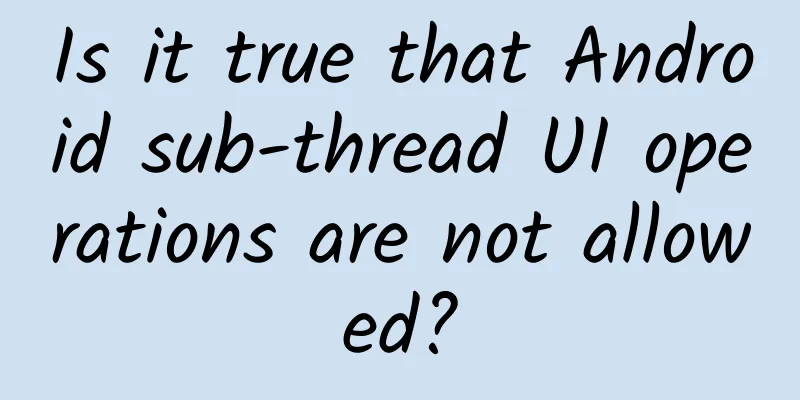
|
Author: Zhang Xichen, vivo Internet Server Team 1. Background and IssuesA certain SDK has a PopupWindow pop-up and animation. Due to business scenario requirements, for the App, the timing of the SDK's pop-up window is random. When the pop-up window pops up, if the App also happens to have an animation executed, the main thread may draw two animations at the same time, resulting in a lag, as shown in the following figure. We use horizontally moving blocks to simulate the animation of the App (such as page switching). It can be seen that when the Snackabr pop-up window pops up, the block animation has obvious lag (moving to about 1/3). The root cause of this problem can be briefly summarized as: uncontrollable animation conflicts (business randomness) + time-consuming methods in the main thread that cannot be placed (pop-up window instantiation, view inflate). Therefore, we need to find a solution to solve the problem of lag caused by animation conflicts. We know that the Android coding standard requires that child threads cannot operate the UI, but is it necessarily so? Through our optimization, we can achieve the perfect effect, smooth animation and no interference: 2. Optimization measures【Optimization method 1】: Dynamically set the delayed instantiation and display time of pop-up windows to avoid business animations. Conclusion: It works, but not elegant enough. Use it as a fallback solution. 【Optimization method 2】: Can the time-consuming operations of the pop-up window (such as instantiation and inflation) be moved to the child thread and executed only in the main thread during the display phase (calling the show method)? Conclusion: Yes. Strictly speaking, the view operation before attach is not a UI operation, but a simple property assignment. 【Optimization method three】: Can the instantiation, display, and interaction of the entire Snackbar be placed in a child thread for execution? Conclusion: Yes, but in some constrained scenarios, although the "UI thread" can be understood as the "main thread" most of the time, strictly speaking, the Android source code has never limited the "UI thread" to be the "main thread". 3. Principle AnalysisLet's analyze the feasibility principles of options 2 and 3. 3.1 Concept Analysis
3.2 Where does CalledFromWrongThreadException come fromAs we all know, when we update interface elements, if we do not execute them on the main thread, the system will throw CalledFromWrongThreadException, observing the exception stack, it is not difficult to find that the exception is thrown from Thrown in ViewRootImpl#checkThread method. // ViewRootImpl.java Through the method reference, we can see that The ViewRootImpl#checkThread method is called in almost all view update methods to prevent multi-threaded UI operations. For in-depth analysis, we take the TextView#setText method as an example to further observe what was done before the exception was triggered. By looking at the method call chain (Android Studio: alt + ctrl + H), we can see that the UI update operation has reached the invalidate method of the common parent class VIew. In fact, this method is a necessary method to trigger UI updates. After View#invalidate is called, the View will be redrawn step by step in subsequent operations. ViewRootImpl . checkThread () ( android . view ) 3.3 Understanding View#invalidate methodLet's take a closer look at the source code of this method. We ignore unimportant code. The invalidate method actually marks the dirty area and continues to pass it to the parent View, and finally the top View performs the real invalidate operation. As you can see, for the code to start recursive execution, several necessary conditions need to be met:
So, if conditions 1 and 2 are obvious, why do we need to check the AttachInfo object once more? What information does this AttachInfo object contain? void invalidateInternal ( int l , int t , int r , int b , boolean invalidateCache , What is in mAttachInfo? Note description: attachInfo is a series of information assigned to a view when it is attached to its parent window. There are some key contents:
In fact, through the information of the above TextView#setText method call chain, we already know that all successfully executed view#invalidate methods will eventually go to the method in ViewRootImpl and check the thread that tries to update the UI in ViewRootImpl. That is to say, when a View is associated with a ViewRootImpl object, it is possible to trigger CalledFromWrongThreadException exception, so attachInfo is a necessary object for View to continue to effectively execute the invalidate method. // android.view.view As described in the comments, combined with the source code, mAttachInfo is assigned only at the attach and detach moments of the view. So we further speculate that UI update operations before view attach will not trigger exceptions. Can we perform time-consuming operations such as instantiation in a child thread before attach? When is a view attached to a window? Just as we write layout files, the view tree is constructed through the addView method of each VIewGroup. By observing the ViewGroup#addViewInner method, we can see the code for binding the child view with attachInfo. ViewGroup#addView → ViewGroup#addViewInner // android.view.ViewGroup In our background case, the layout inflation operation of the pop-up window is time-consuming. So has the attachWindow operation been completed when this operation is executed? In fact, when infalte, the developer can freely control whether to perform the attach operation, and all infalte overloaded methods will eventually execute LayoutInfaltor#tryInflatePrecompiled. That is to say, we can perform the inflate operation and addView operation in two steps, and the former can be completed in the child thread. (In fact, the AsyncLayoutInflater in the Androidx package provided by Google also operates in this way). private View tryInflatePrecompiled ( @ LayoutRes int resource , Resources res , @ Nullable ViewGroup root , So far, everything seems clearer. Everything is related to ViewRootImpl, so let's take a closer look at it:
When we can add a new window through WindowManager#addView, the implementation of this method WindowManagerGlobal#addView will instantiate ViewRootImpl and set the newly instantiated ViewRootImpl as the Parent of the added View. At the same time, the View is also identified as the rootView. // android.view.WindowManagerGlobal Let’s observe again The calling relationship of the WindowManagerGlobal#addView method shows the calling times of many familiar classes: WindowManagerGlobal . addView ( View , LayoutParams , Display , Window ) ( android . view ) From the calling relationship, we can see that Dialog, PopupWindow, Toast, etc., are all attached to the window and associated with RootViewImpl when the display method is called. Therefore, in theory, we only need to ensure that the show method is called in the main thread. In addition, for pop-up scenes, the Androidx material package also provides Snackbar. Let's take a look at the attach timing and logic of Snackbar in the material package: It can be found that this pop-up window is actually directly bound to the existing view tree through the addView method in the View passed in by the business, rather than being displayed by adding a new window through WindowManager. The timing of its attach is also when show is called. // com.google.android.material.snackbar.BaseTransientBottomBar At this point, we can draw the first conclusion: the instantiation of an unattached View and the operation of its attributes can be completely performed in the child thread because its top-level parent does not have a viewRootImpl object, and no matter what method is called, it will not trigger checkThread. Only when the view is attached to the window, it will become part of the UI (mounted to the ViewTree) and need to be controlled, updated, and managed by a fixed thread. If a view wants to attach to a window, there are two ways:
How to understand Window, View and ViewRootImpl? Window is an abstract concept. Each Window corresponds to a View and a ViewRootImpl. Window and View are connected through ViewRootImpl. —— "Exploring the Art of Android Development" The question is: So, must the fixed thread that controls the View be the main thread? /** 3.4 In-depth observation of ViewRootImpl and Android screen refresh mechanismLet's rephrase the question: Is it safe to update the View off the main thread? Can we have multiple UI threads? To return to this question, we still have to return The origin of CalledFromWrongThreadException. // ViewRootImpl.java Looking at the code again, we can see that the judgment condition of the checkThread method is to judge whether the mThread object is consistent with the Thread object of the current code. So, is the ViewRootImpl.mThread member variable necessarily mainThread? In fact, looking at the ViewRootImpl class, the mThread member variable is assigned only once, that is, in the ViewRootImpl object constructor, the current thread object is obtained when instantiated. // ViewRootImpl.java Therefore, we can infer that the checkThread method determines whether the thread when ViewRootImpl is instantiated is consistent with the thread of the UI update operation, and does not strictly constrain the main process of the application. In the previous article, we have explained that the instantiation of the ViewRootImpl object is called by WindowManager#addView → WindowManagerGlobal#addView → new ViewRootImpl. These methods can be triggered in the child thread. In order to verify our inference, we first analyze it from the source code level. First, let's look at the comments for ViewRootImpl:
The document states that ViewRootImpl is the topmost object in the view tree, which implements the necessary protocols between View and WindowManager. As most of the internal implementations in WindowManagerGlobal, most of the important methods in WindowManagerGlobal are eventually implemented in ViewRootImpl. There are several very important member variables and methods in the ViewRootImpl object that control the mapping operations of the view tree. Here we briefly introduce the mechanism of Android screen refresh and how it interacts with the above core objects and methods, so that we can better analyze it further. Understanding the Android screen refresh mechanism We know that when View is drawn, it is triggered by the invalidate method, and eventually it will go to its onMeasure, onLayout, and onDraw methods to complete the drawing. The process during this period plays an important role in our understanding of UI thread management. Let's look at the Android drawing process through the source code: First, the View#invalidate method is triggered, passed to the parent View level by level, and finally passed to the ViewRootImpl object at the top level of the view tree to complete the marking of the dirty area. // ViewRootImpl.java ViewRootImpl will then execute the scheduleTraversal method to plan the UI view tree drawing task:
// ViewRootImpl.java After Choreographer is called, it will go through the following methods in succession, and finally call DisplayEventReceiver#scheduleVsync, and finally call the nativeScheduleVsync method to register to receive the vertical synchronization signal of the underlying system. Choreographer #postCallback → // android.view.DisplayEventReceiver The underlying system will generate a Vsync (vertical synchronization) signal every 16.6ms to ensure stable screen refresh. After the signal is generated, the DisplayEventReceiver#onVsync method will be called back. Choreographer's internal implementation class After FrameDisplayEventReceiver receives the onSync callback, it sends an asynchronous message in the message queue of the UI thread and calls the Choreographer#doFrame method. // android.view.Choreographer When the Choreographer#doFrame method is executed, doCallbacks will be called next. (Choreographer.CALLBACK_TRAVERSAL, ...) method executes the mTraversalRunnable registered by ViewRootImpl. That is the ViewRootImpl#doTraversal method. // android.view.Choreographer ViewRootImpl#doTraversal then removes the synchronization signal barrier and continues to execute the ViewRootImpl#performTraversals method, and finally calls the View#measure, View#layout, and View#draw methods to perform drawing. // ViewRootImpl.java So is the UI thread consistent throughout the entire drawing process? Is there a situation where the main thread is forcibly used during the drawing process? Throughout the entire drawing process, ViewRootImpl and Choreographer both use Handler objects. Let's take a look at how their Handlers and the Loopers in them come from: First of all, the Handler in ViewRootImpl is internally inherited from the Handler object, and does not overload the Handler constructor or explicitly pass in the Looper. // ViewRootImpl.java Let's take a look at the constructor of the Handler object. If Looper is not explicitly specified, Looper.myLooper() is used by default. MyLooper gets the looper object of the current thread from ThreadLocal. Combined with our previous discussion that the mThread of the ViewRootImpl object is the thread where it is instantiated, we know that the mHandler thread of ViewRootImpl is the same thread as the instantiation thread. // andriod.os.Handler Let's take a look at which thread the Handler thread is in the mChoreographer object held inside ViewRootImpl. mChoreographer instantiation is obtained through the Choreographer#getInstance method when the ViewRootImpl object is instantiated. // ViewRootImpl.java Observing the Choreographer code, we can see that the getInsatance method also returns the current thread instance obtained through ThreadLocal; The current thread instance also uses the current thread's looper (Looper#myLooper) instead of forcibly specifying the main thread Looper (Looper#getMainLooper). Therefore, we conclude that during the entire drawing process, From the View #invalidate method to registering the vertical synchronization signal listener ( DisplayEventReceiver #nativeScheduleVsync ) , and the vertical sync signal callback ( DisplayEventReceiver #onVsync ) to the View's measue / layout / draw method calls are all in the same thread ( UI thread ) , and the system does not restrict the scene to be the main thread. // andriod.view.Choreographer The Android drawing process and UI thread control analyzed above can be summarized as follows: At this point we can draw a conclusion: the UI thread of a View displayed by a window can be independent of the App main thread. Let's verify it with coding practice. 4. Coding Verification and PracticeIn fact, in practice, the drawing of screen content is never completed entirely in one thread. The most common scenarios are as follows:
Combined with the working case, we tried to put the entire PopupWindow of the SDK in the child thread, that is, to specify an independent UI thread for the PopupWindow of the SDK. We use PopupWindow to implement a customized interactive Snackbar popup window. In the popup window management class, define and instantiate the customized UI thread and Handler; Note that the showAtLocation method of PopupWindow will be thrown into the custom UI thread (the same applies to dismiss). In theory, the UI thread of the popup window will become our custom thread.
After that, we define the pop-up window itself, and its pop-up and disappearance methods are implemented and executed through the management class.
At this point, we instantiate the pop-up window in the child thread, and after 2 seconds, we also change the TextView content in the child thread. // MainActivity.java Display effect, UI displays interaction normally, and because the UI is drawn in different threads, it does not affect the operation and animation of the main thread of the App: Observe that the response thread of the click event is the custom UI thread, not the main thread: (Note: The code in practice has not been actually put online. The UI thread of PopupWindow in the online version of the SDK is still consistent with the App and uses the main thread). V. ConclusionA deeper understanding of why Android child threads cannot operate the UI: the thread that controls the View drawing and the thread that notifies the View to update must be the same thread, that is, the UI thread. For scenarios such as pop-up windows that are relatively independent of other App services, multi-UI thread optimization can be considered. In subsequent work, clearly distinguish the concepts of UI thread, main thread, and child thread, and try not to mix them. Of course, there are some scenarios where multiple UI threads are not applicable, such as the following logic:
|
<<: iOS 16 is said to have too many bugs, so it’s better for everyone to update later
>>: Apple officially announced: iOS 16 has these powerful new features
Recommend
WeChat circle application template, how to write the reason for applying for WeChat circle?
WeChat Circles is a new product launched by WeCha...
90% of life depends on "talking"
We talk, communicate and chat with others every d...
What are the advantages of developing a mini program? What are the advantages of developing a tourism mini program?
Q: What are the advantages of developing a touris...
Can't eat anything if you have diabetes? Beware of malnutrition!
Image from: freepik.com According to data from th...
How does a mobile phone unlock a shared bicycle?
With the development of the Internet and the popu...
How to find operational guidance to leverage user growth?
As an operator , you always need to keep in mind ...
Tesla's poor sales in China: the debate over closed ecosystem
On June 17, Tesla announced that the Model S has ...
2022 Alipay Collection of Five Blessings Official Guide: More than 1,000 merchants will issue blessing cards
Although it is complained by many people every ye...
Stay away from digestive tract infectious diseases, you need to know this secret
"We pay a lot of attention to food hygiene, ...
Nowadays, liberal arts students have the final say on the Internet!
Recently, Xiao Nei saw a piece of news that made ...
40℃ is not over yet! This summer may be hotter than ever before!
Audit expert: Zhan Mingjin PhD, Chinese Academy o...
There are “tricks” to making popular products, here are the creative secrets for Internet finance advertising!
In the attention economy, high-quality creativity...
What are the functions of Foshan Financial Mini Program? How much does it cost to make a financial app?
With the advent of the 5G era, the financial indu...
Wuhan University: The dormitory with cholera cases is no longer sealed! Virulence gene is negative, so why does it still cause disease?
According to the official Weibo of Wuhan Universi...
From two perspectives, 13 devilish details in Pinduoduo's mini program sharing
For us e-commerce practitioners, we always feel c...


